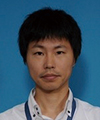 |
|||
|
|
|||
|
Feature Articles: Network Technology for Digital Society of the Future—Toward Advanced, Smart, and Environmentally Friendly Operations Vol. 17, No. 7, pp. 31–34, July 2019. https://doi.org/10.53829/ntr201907fa7 Toward the Realization of Eco-friendly Telecom CentersAbstractThe NTT Group is working to protect the global environment in line with the NTT Group Environmental Statement and its Eco Strategy 2030. Various initiatives toward global environmental protection in telecom centers are included in the strategy. This article introduces two such initiatives—under-floor wiring technology that improves the energy efficiency of telecom centers by optimizing the cooling method, and noise suppression technology that reduces maintenance personnel operations by improving work efficiency. Keywords: cooling efficiency, wiring, noise suppression 1. IntroductionThe Eco Strategy 2030 [1] declares the NTT Group’s commitment toward research and development that can help make communication facilities more efficient and consume less energy with the aim of achieving more efficient use of power, the main factor driving CO2 (carbon dioxide) emissions in telecommunications. To achieve these targets, we are working to improve cooling efficiency in telecom centers and to improve work efficiency in the construction and operation of facilities. One problem surrounding cooling efficiency in telecom centers is that repeated replacement of information and communication technology (ICT) equipment tends to result in heavy congestion of under-floor wiring and consequently, narrow airflow space. This obstructs the flow of cold air and reduces cooling efficiency. In addition, a problem surrounding work efficiency is that specialized skills and complex work procedures are required in restoration work after a communications failure caused by electromagnetic noise. This makes failure troubleshooting extremely time consuming. We have been working to solve these problems and achieve optimized telecom centers by investigating methods to reduce the volume of under-floor wiring and to suppress noise. 2. Under-floor wiring technologyWhen laying cables to accommodate equipment replacement or service changes, laying the cables freely or laying new cables and keeping unnecessary old cables without carefully considering under-floor airflow space for cold air can result in the accumulation of a lot of unneeded cabling under the raised floor. This, in turn, can obstruct cold air flowing from air conditioners and prevent it from diffusing evenly throughout the floor. To improve cooling efficiency, the volume of cables occupying the space under the raised floor must be reduced to secure adequate space for the flow of cold air (Fig. 1).
With regard to communication cables, laying multi-fiber cables beforehand reduces the volume of cables to at least one-fourth the conventional value. In addition, converting the optical mode within the rack when replacing ICT equipment enables continued use of previously laid multi-fiber cables, eliminating the need to replace them. Furthermore, the use of optical cross-connect devices enables remote and automatic switching of connections between ICT equipment, thereby reducing the amount of onsite work. Moreover, as a method of downsizing power cables, the application of a high-voltage direct current (HVDC: 380-VDC) power supply system can reduce the volume of cables to at least one-sixth that of a 48-VDC power supply system from the viewpoint of allowable current and voltage drop. The application of these technologies can secure much more under-floor airflow space and improve cooling efficiency. 3. Noise suppression technologyConductive electromagnetic noise into ICT equipment causes problems such as erroneous device operation and Ethernet frame loss. In general troubleshooting, noise suppression filters are installed on cables that connect to equipment on which problems have occurred, but the filters have a narrow range of applicable frequencies, so maintenance personnel must be skilled in measuring noise and selecting filters suitable for those frequencies. In addition, it is necessary to shut down the ICT system and disconnect the cables in order to install a filter that can sufficiently attenuate electromagnetic noise. To therefore eliminate the need for measuring electromagnetic noise in the field and for selecting and installing filters, we are developing a non-contact (clamp-on) filter that can achieve sufficient attenuation against broadband noise. We have examined a filter structure that can detect electromagnetic noise and inject the amplified noise with an opposite phase to the cable, thereby achieving a level of attenuation of 10 dB or greater for a frequency band of 150 kHz–8 MHz (Fig. 2).
4. Future outlookGoing forward, we will expand our research from improving the under-floor airflow space to achieving integrated optimization of telecom centers by investigating airflow control around ICT equipment and communication rack arrangements based on heat-generation density. Additionally, with the aim of improving work efficiency in dealing with electromagnetic noise, we plan to conduct field trials of prototype equipment in collaboration with an NTT operating company to extract problems that occur in actual deployment and make further improvements to functions. We are committed to rolling out these technologies to support an increasingly sophisticated communication network while achieving telecom centers that can contribute to the preservation of the global environment. Reference
|
|||
















